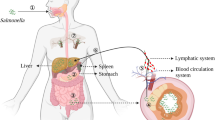Abstract
We examined the molecular mechanisms of the cytotoxicity of Entamoeba histolytica, using the loss of transepithelial electrical resistance (TER) of monolayers of Madin-Darby canine-kidney (MDCK) cells on their incubation with axenic trophozoites of the HM1-IMSS strain. Such loss of TER occurs very early (in 2–5 min) and is caused by the opening of tight junctions and the detachment of cells. We used specific inhibitors for three of the four molecules currently accepted as being responsible for cytotoxicity: galactose-specific adhesin(s), phospholipase A, and cysteine proteinases. We also used inhibitors of calcium channels. Axenic trophozoites of E. histolytica strain HM1-IMSS were preincubated with the different inhibitors for 1 h prior to their coincubation with MDCK-cell monolayers. The only inhibitor that effectively blocked the loss of TER caused by the parasite was galactose. We suggest that in this experimental model, galactose-specific adhesin(s) are essential for amebic cytotoxicity.
Similar content being viewed by others
Author information
Authors and Affiliations
Additional information
Received: 8 June 1999 / Accepted: 21 July 1999
Rights and permissions
About this article
Cite this article
López-Vancell, R., Montfort, I. & Pérez-Tamayo, R. Galactose-specific adhesin and cytotoxicity of Entamoeba histolytica . Parasitol Res 86, 226–231 (2000). https://doi.org/10.1007/s004360050035
Issue Date:
DOI: https://doi.org/10.1007/s004360050035



